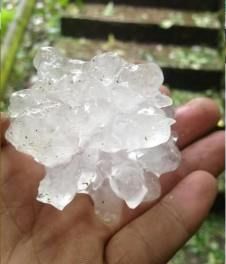Detecting Hail Damage On Asphalt Shingles
Jun 08, 2017 1. Verify and confirm with the local weather bureau that a hail event was recorded for your specific area. This information can lend significant credibility to your claim process with your insurance carrier.
1. Verify and confirm with the local weather bureau that a hail event was recorded for your specific area. This information can lend significant credibility to your claim process with your insurance carrier.
2. The first hail damage indication will be any obvious damage to the field shingles, roof vents, flashing, and Hip & Ridge shingles. These items will generally exhibit the most evident damage. Impacts from hailstones will typically create depressions, dents and/or other obvious scarring to the various surfaces of the roof system components.
3. If any obvious hail damage is evident on the above items, a very thorough inspection of the field shingles is warranted. Inspect for the loss of, or loosening of, the 3M ceramic-coated granules on the shingles’ top surfaces. The impacting of the hailstones can loosen the adhesion of the granules to the coated asphalt substrate below and granules will gradually begin to loosen and fall off as a result – either immediately or in a few months.
4. Several shingles at random will need to be carefully raised to inspect for any rupturing of the back of the shingle substrate. Even if the top surface granules appear to be intact, there may be hidden rupturing of the shingle substrate. Virtually any rupturing of the fiberglass/asphalt substrate indicates a compromised life expectancy of the shingles and should be replaced.
5. If damage is suspected, but not readily evident immediately after the hail event – take multiple, dated, photos showing the condition and aesthetics of the entire roof at that time. These photos can then be used as a reference in the future if the damage manifests itself later. The damage may exhibit itself much later, due to the hail event and granule loss acceleration, which can cause obvious aesthetic and physical damage to show up over time.
6. If damage is not indicated immediately after the storm, continue to monitor and document the field shingles, gutters, and downspouts for excessive granule losses for several months.
7. In hail prone areas, consider installing replacement shingles classified by the UL 2218 testing protocol as Class 4, Impact Resistant. These Class 4 rated asphalt shingles are designed to preclude most future impact damage.
8. In many areas of the country, insurance carriers offer very attractive, and significant, continuing discounts to homeowners who have installed the Class 4 Impact Resistant asphalt shingles.




